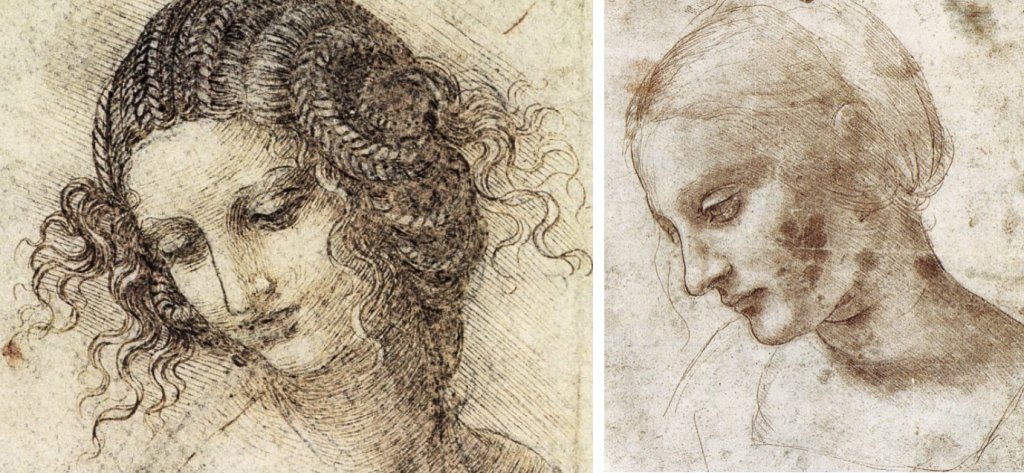da Vinci and the Renaissance 2020 Dashboard
Description
 Da Vinci and the Renaissance is a fully cross-disciplinary study-abroad program that explores the transition from the medieval period to the Renaissance across multiple subjects (art, architecture, engineering, science and more), laying out how much of what we take for granted today about technology or about the human subject were implemented in this rich period, especially in Italy. Our focus will be that most famous “Renaissance man,” Leonardo da Vinci. The course’s interdisciplinary approach asks students to think about the constructed nature of the things we take for granted as “natural” (e.g., time, space, human subjectivity, meaning, sight, knowledge, and law), thus opening our eyes to the significance of cultural differences. We will also consider the many ways that we are now seeing a cultural, ontological, and epistemological shift that is as far-reaching as the one between the medieval period and the Renaissance
Da Vinci and the Renaissance is a fully cross-disciplinary study-abroad program that explores the transition from the medieval period to the Renaissance across multiple subjects (art, architecture, engineering, science and more), laying out how much of what we take for granted today about technology or about the human subject were implemented in this rich period, especially in Italy. Our focus will be that most famous “Renaissance man,” Leonardo da Vinci. The course’s interdisciplinary approach asks students to think about the constructed nature of the things we take for granted as “natural” (e.g., time, space, human subjectivity, meaning, sight, knowledge, and law), thus opening our eyes to the significance of cultural differences. We will also consider the many ways that we are now seeing a cultural, ontological, and epistemological shift that is as far-reaching as the one between the medieval period and the Renaissance
The 3 credits will be split between 8 weeks of instruction at Purdue (1 credit) and our study-abroad program to Venice and Florence (2 credits). In Italy, we will see a number of things that we will have discussed before getting on a plane together. We will also think about the nature of confronting a different culture and of being a tourist in a foreign land.
Galleries, Timelines, and Maps
There is no content in this group.
Individual Entries
Leonardo spent his early years as an Apprentice to Verrocchio in Florence. During these years, he often worked creating pageants which is believed to be the inspiration for his helicopter design. True to his interdisciplinary nature, Leonardo also spent his years as an apprentice learning about a wide variety of other topics including painting, botany, and engineering. Around the late 1470s, Leonardo also became interested in hydraulic engineering and took particular interest in studying Archimedes’ screw, the physical principles of which are very similar to those behind his helicopter design. Living in Florence gave Leonardo ample access to scholarly works that he could consult and learn from to continue to pursue his varied interests.
Source:
The Young Leonardo: Art and Life in Fifteenth-Century Florence
Feinberg, Larry J. The Young Leonardo: Art and Life in Fifteenth-Century Florence. Cambridge University Press, 2014.
Leonardo’s Codex on the Flight of Birds was collected in its entirety in the 19th century after being traded around Europe. The Codex was given to the Royal Library of Torino at the end of the 19th century to King Umberto I by the Russian scholar, Theodore Sabachnikoff. The Royal Library was founded in 1831 by King Carlo Alberto of Savoia-Carignano. In addition to his personal collections, Alberto relied on scholars to collect and gather important historical documents related to Italy and the House of Savoy. In addition to the Codex on the Flight of Birds, the Royal Library has also housed Leonardo’s Self-Portrait in red chalk and the Study for the Angel’s Face, which was used as a study for his painting, The Virgin of the Rocks. After brief loan to the US National Air and Space Museum in Washington DC in 2013, the Codex returned to the Royal Library where it still remains.
Source:
The Royal Library In Turino....
moreAnother place where Leonardo da Vinci got his influence was Pavia. Him and di Giogio traveled there to oversee the construction process of a new cathedral after the people heard about their work being done in Milan. The facade was created in a way that matched da Vinci's design tastes: symmetrical layout and appearance that looked simple and balanced. However, this was where both da Vinci and di Giorgio found a copy of Vetruvius's works that inspired his humanistic ideas to be implemented in church design.
Source: Isaacson, Walter. Leonardo Da Vinci. Simon & Schuster, 2017.
